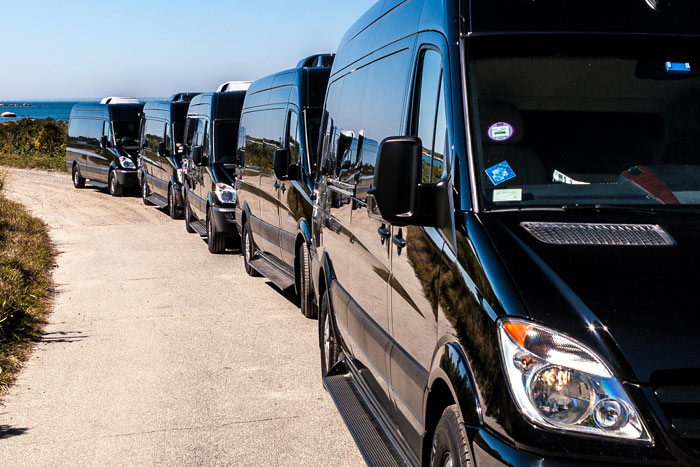20 Best Suggestions For Picking Employee Shuttle Websites
20 Best Suggestions For Picking Employee Shuttle Websites
Blog Article
Employee Shuttle Transportation Ten Tips To Assist You In Planning And Scheduling It.
Here are 10 top strategies to maximize flexibility in shuttle services for employees as well as scheduling.
1. Assessment of Needs of Employees
Start by assessing the requirements of your employees' schedules. Focus groups or surveys could aid in determining the preferred time for shuttles, shift pattern, and other requirements specific to your employees. Understanding the diverse demands of your employees is crucial for creating an itinerary that is flexible enough to accommodate the maximum number of employees.
2. Implement a flexible scheduling system
Set up a flexible schedule that permits adjustments to be made upon employee needs. Think about offering shuttles at different times during the day to accommodate different schedules and work schedules. It is possible to offer early morning shuttles to employees who work first-shift, midday shuttles for those who have flexible schedules, or late evening shuttles for workers on second and third-shift.
3. Make adjustments using real-time data
Make use of technology to give real-time information regarding employee traffic and use. This information will aid you in making educated decisions on when to modify shuttle times or add more routes. The analysis of data about usage patterns can help you improve your schedule to meet demand.
4. Create a Reservation System
Think about implementing a system for reservations for shuttle service. This allows employees to book their seats ahead of time, ensuring that there is enough capacity to satisfy the demand. It's possible to determine peak times and modify the schedule to accommodate demand by using the reservation system.
5. How do you communicate schedule changes Effectively
To ensure that employees are kept informed, communicate changes to the schedule of shuttles quickly and clearly. Make use of multiple communication channels, such as emails, intranets for the company, or mobile apps, to keep employees informed. Communication clarity will help avoid confusion and let employees organize their travel plans.
6. Monitor Peak Usage Times
Check the utilization of shuttles frequently to identify the times where demand is highest. These statistics can be used to guide you in adjusting your schedule in order to add more shuttles at busy times. By anticipating demand spikes and adjusting your schedule accordingly, you can improve service reliability and decrease waiting times for employees.
7. Offer On Demand Services
Explore the possibility of providing shuttle services upon request for employees who have diverse timetables. This could involve making use of apps that allow employees to book a shuttle at their convenience and ensure that transportation is available at any time. On-demand service may allow for greater flexibility and support employees who work in irregular hours.
8. Consider Hybrid Models
Implement hybrid schedules that combine flexibility along with fixed routes. For instance, you may have set routes at peak hours but allow an option for flexible pickups and drop-offs non-peak times. This will allow you to maximize your efficiency, while still accommodating to the employee's schedules.
9. Feedback is crucial for continual improvement
Encourage employees and managers to give feedback on the shuttle schedule as well as the overall service of transportation. Through regular review of your feedback, you are able to identify areas of improvement and make adjustments to your schedule. By involving employees, you can create an increased sense of ownership for the shuttle service.
10. Seasonal Changes: Review and adjust
Be aware of seasonal shifts in employee schedules. For instance, shifts in holidays, holiday times in the summer or work hours. Always review and update the shuttle schedule in order to accommodate fluctuations in availability of employees. It is essential to be flexible in the scheduling of shuttles at these periods. This will ensure high levels of participation and satisfaction.
The tips below will help your organization create a system of scheduling that is flexible, efficient and can meet the different demands of employees. View the top employee shuttle url for site advice including access transport, transportation car service, atlanta airport transportation, airport transportation services, los angeles airport shuttle, transportation to airport, airport service car, transportation to lax, luxury transportation services, shared ride services and more.
10 Tips For The Capacity And Vehicle Options Of A Transportation Service For Corporate Events. Service
Here are 10 tips to choose the best option for your vehicle and capacity when it comes to an event transportation service for corporate events.
1. Evaluate Event Attendance Estimates
Estimate the number of people who will be attending the event. You can estimate this using registration data, RSVPs or attendance records. Understanding the anticipated number of participants can help determine the capacity of the transport needed, and helps with vehicle planning.
2. Choose the Right Vehicle Types
The type of vehicle you choose will depend on the anticipated attendance and event nature. Shuttles and buses that have many seats are great for large-scale groups. For smaller parties or VIP guests the luxury vans or sedans might be better suited. A variety of vehicle options can ensure that attendees are transported comfortably.
3. Consider accessibility requirements
It is important to ensure that all passengers, including those with disability are able to access the vehicle. This can include choosing those with wheelchair lifts or that have low-entry. The inclusion of wheelchairs in transportation is not just compliant with legal standards, but it also improves the overall experience of all participants.
4. Plan to Pickup at Multiple Locations
If attendees are coming from various locations, plan for several pickup points to make transportation easier. This can include central locations like airports, hotels, or public transport hubs. You can ease logistical issues and improve attendance by accommodating multiple pickup locations.
5. Create a Reservation System
Think about implementing a reservation program for transportation services. This allows attendees to book their seats prior to the event and ensure that the vehicles are full and reduces the possibility of overcrowding. A reservation system can aid in adjusting capacity according to actual demand.
6. Find the most efficient routes
Design routes that are efficient to make sure that vehicles arrive in time and leave at the time they are due to leave. Examine the patterns of traffic and bottlenecks to determine the best routes for vehicles. Utilizing software for route optimization can assist in identifying the most efficient routes to reduce travel time and improve the overall experience of attendees.
7. Offer On-Demand Shuttle Service
For larger events, provide shuttle services on demand. Participants will be allowed to schedule the bus at their own convenience. This is particularly beneficial for events with many days or different schedules. On-demand transportation options allow for more flexibility and will assure that attendees are able to travel whenever they need to.
8. Monitor Vehicle Capacity Utilization
Monitor the capacity of vehicles during the event. By monitoring the amount of seats filled, it's possible to make changes quickly. Analyzing capacity data following an event can help inform the transportation plan for future events.
9. Communicate Transportation Information Clearly
Clearly communicate transportation details to the attendees in advance of the event. Inform attendees of the pickup locations, schedules, and the types of vehicles. Utilizing multiple communication channels (emails and printed materials, event apps) will ensure that participants are informed about their transportation choices.
10. Get feedback on improvements for the future.
After the event, collect feedback about attendees' transport experience. This can include aspects such as the comfort of the vehicle, timeliness and general satisfaction. The feedback collected will help to identify what worked and what needs to be improved upon in future corporate events.
With these suggestions businesses can effectively manage their capacity and choose the right transportation options for corporate events. transportation services, ensuring that everyone has a pleasant and seamless experience. Planning and execution are key for the successful running of an event and contribute to a positive impression of your organization. Have a look at the top rated corporate event transportation blog for blog advice including global logistics company, best transport, logistics company near me, transportation and logistics services, transportation logistics services, logistics transportation, transport systems, transporting buses, transport job, it's logistics and more.